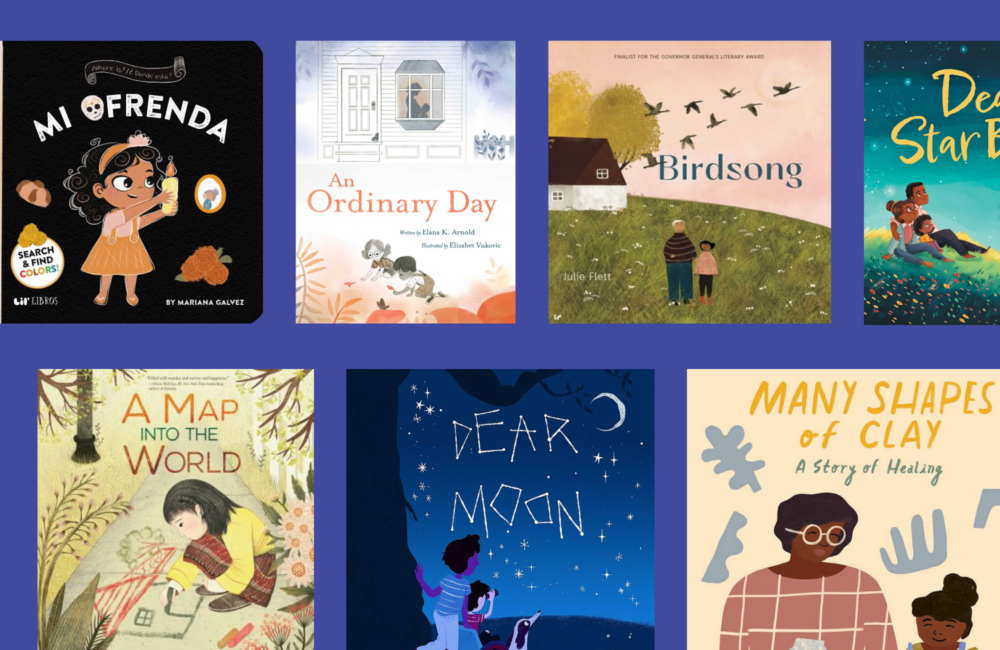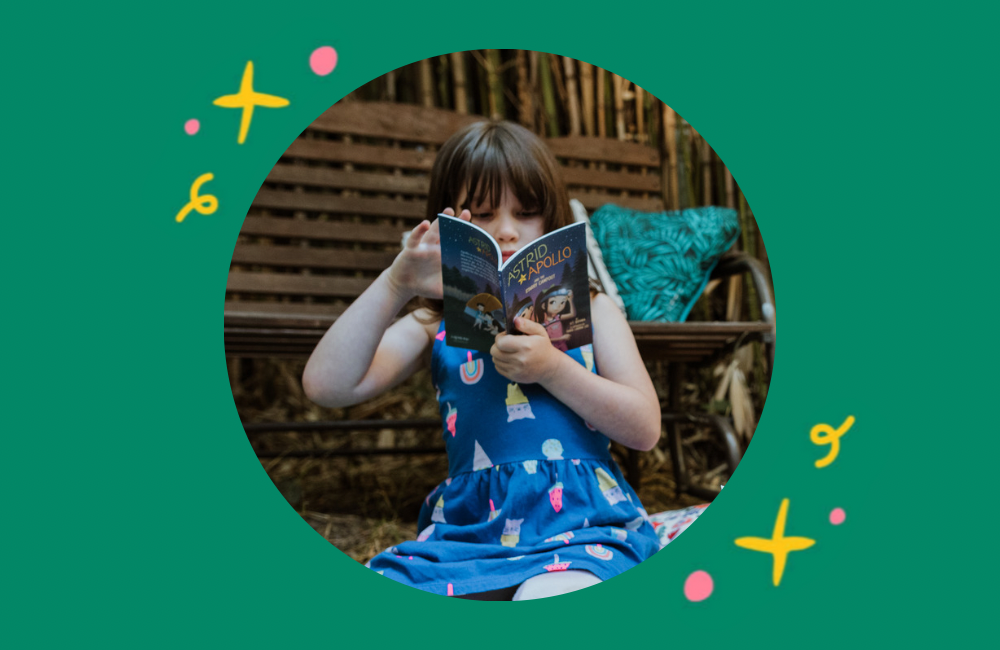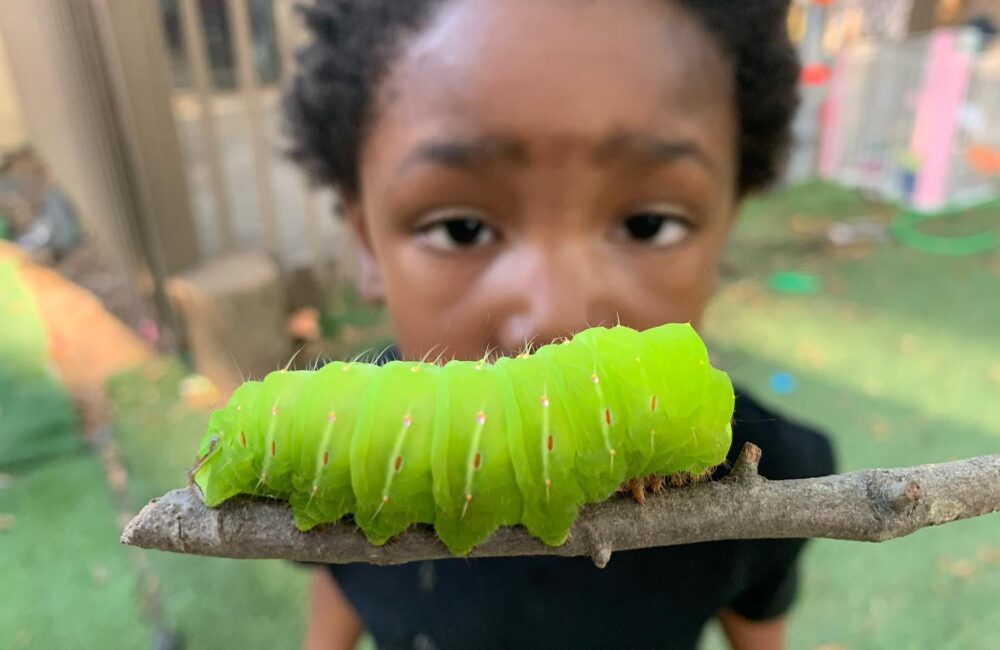It’s a tale as old as time—a little feminist finds their first book about princesses, and BOOM, suddenly your house has a case of “royal fever.” While this is not necessarily a bad thing (our favorite symptom is excessive amounts of glitter) some parents expressed that they were worried about the messages being spread by these princess stories, and we agreed! So, we mounted our valiant steeds and searched the kingdom high and low, for books that would satisfy the entire royal court without sacrificing the fierce feminist values we hold dear. Here are the treasures we found!

The Water Princess
- Written by Susan Verde
- Illustrated by Peter H. Reynolds
- Published in 2016
- For ages 2-4
Princess Gie Gie can tame wild dogs with her howl, and make the wind come at her call, but she cannot bring the water closer to her village.
Things we love: This book is another that breaks down the standard idea of what a “princess” can be, widening the royal world to include stories like Gie Gie’s. The writing is also lovely, wrapping Gie Gie in a story that acknowledges the beauty of her world alongside its difficulties.
Things to know: The author is not from Burkina Faso, and is therefore not a member of a community like the one in the story, however, the research she undertook seems to have created an accurate portrayal. Additionally, a portion of proceeds from the sale of this book go directly to supporting causes that reach those communities, through the charity Ryan’s Well.

Princess Smartypants
- Written and illustrated by Babette Cole
- Published in 1986
- For ages 2-4
Princess Smartypants doesn’t want to get married! She’s far too busy caring for her menagerie of misunderstood magical creatures, so when suitors come to call she sends them packing through a series of ever more elaborate hijinks.
Things we love: When a prince is finally able to complete all the herculean tasks he has been assigned, most stories would reward him with the princess’s hand in marriage, thereby turning her into a mere object—a prize to be won. Instead, Princess Smartypants turns her prince into a toad. Take that, tradition.
Things to know: Babette Cole was the author of many books for young readers, and her writing has been described as “anarchical.” Be prepared for unexpected plot twists in these tales!

The Princess and the Pit Stop
- Written by Tom Angleberger
- Illustrated by Dan Santat
- Published in 2018
- For ages 2-4
Oh No! The princess is in last place! Her pit crew scrambles to change out her wheels, and her Fairy Godmother tells her that she doesn’t stand a chance, but this princess isn’t one to quit in the middle of a race.
Things we love: The refusal to accept defeat without trying her hardest is an often overlooked princess trait, and we think this high-speed chase does a perfect job of celebrating royal grit.
Things to know: This book is chock full of fairy-tale creatures, so it doubles as a fun spot-them-all search and find game!

Not All Princesses Dress in Pink
- Written by Jane Yolen and Heidi E. Y. Stemple
- Illustrations by Anne-Sophie Lanquetin
- Published in 2010
- For ages 4-6
Princesses wear all kinds of things—but never forget their sparkly crowns!
Things we love: This rhyming book shows that all types of girls can be princesses, and that being a princess can mean all sorts of things! Wearing pink isn’t bad—but it’s not for everyone.
Things to know: When the princesses go to a “ball” there is a line about one princess who “hip-hops in her overalls.” While this is fairly innocuous, it is worth noting that the term “hip-hop” has its origins in a culture that is not being directly represented in this book, and we wish they had just used the word “dance.”

Princess Grace
- Written by Mary Hoffman
- Illustrated by Cornelius Van Wright and Ying-Hwa Hu
- Published in 2007
- For ages 4-6
This sequel to the classic Amazing Grace finds Grace and her classmates preparing for a princess parade, but which of them will be chosen to ride on the float? And what should a princess look like, anyway?
Things we love: Grace’s understanding of what a princess is slowly changed over the course of the story, and along the way the book makes room for all types of princesses, from traditional to fantastical to brave. The message is inclusive without being preachy, which is our favorite kind!
Things to know: In Amazing Grace, the story directly addresses the false idea that Grace can’t be what she wants to be because she is a girl, or because she is black. This story takes a more indirect approach, but is still furthering a message of self determination and equality. We think the two books work best as a set!

The Paper Bag Princess
- Written by Robert Munsch
- Illustrations by Michael Martchenko
- Published in 1980
- For ages 4-6
No list of feminist princess books would be complete without this tale of the brave girl who outsmarts a dragon to save her prince, only to find him far less interesting than she had previously thought.
Things we love: This book does such a great job of displaying a female heroine with guts, brains, and determination that we have also included it on our list of the Top 25 Tried-And-True books for little feminists of all ages.
Things to know: If you’re looking for a gift, this classic may already be on your Little Feminist’s shelf– but there are some lovely anniversary editions available for a special occasion!

The Princess and the Pony
- Written and Illustrated by Kate Beaton
- Published in 2015
- For ages 4-6
Princess Pinecone may be the smallest warrior in her kingdom, but that doesn’t mean she will back down from a fight! All she needs is a trusty battle-trained steed— but what she gets is an adorable pony.
Things we love: Pinecone’s desire to be a warrior is never questioned by those around her—the fact that she’s a girl never even comes up as a potential reason for her to stay out of the tournament. Other brave and fierce female warriors are there, too! This Princess is also multi-racial, which makes her a triple-representation-threat.
Things to know: The story is a tad rambunctious, and may encourage roughhousing. That being said, the ending offsets any harm that a warrior-focused plot might otherwise cause, since it turns out that the fiercest fighters want nothing more than to stop fighting and would rather spend their time petting an adorable tiny horse.

The Princess Knight
- Written by Cornelia Funke
- Illustrated by Kerstin Meyer
- Published in 2001
- For ages 6-8
Violetta’s brothers always make fun of her for training to be a knight, but when her father announces a tournament for her hand in marriage, this princess knows that it’s time to armor up and fight for her freedom.
Things we love: After she successfully proves her skill in combat, Violetta’s father and brothers are apologetic about their earlier lack of respect. The book does a great job of demonstrating that asserting yourself may be hard work, but it will pay off in the end.
Things to know: Violetta may have solved her own problems, but what about princesses who aren’t allowed to become knights in the first place? This book may be a good starting point for a discussion about how Violetta could speak out for other princesses who don’t want to get married, and how your little feminist can use their power to provide support for the people who need help in their lives, too!

The Princess in Black
- Written by Shannon and Dean Hale
- Illustrated by LeUyen Pham
- Published in 2014
- For ages 6-8
Princess Magnolia is perfectly prim, proper, and pink, but the princess in black, well, that’s another story! She fights monsters and wears a mask! There’s simply no way these two very different princesses could possibly be the same girl, right?
Things we love: Princess Magnolia may have to hide her secret alter ego from nosy duchesses, but she never hides who she truly is.
Things to know: Older readers will love other princess-themed classics from Shannon Hale, including The Goose Girl and Princess Academy.

Cinder Edna
- Written by Ellen Jackson
- Illustrated by Kevin O’Malley
- Published in 1994
- For ages 6-8
Cinderella has a neighbor, and she’s much more interesting!
Things we love: Cinder Edna is self-sufficient, multi-faceted, and down to earth. Better yet, her prince is exactly the same way! This is a romance we can get behind.
Things to know: Cinder Edna is perfectly nice, but the narrator seems frustrated by Cinderella’s lack of self sufficiency. While this will probably amuse parents who are tired of a damsel-in-distress princess, we still occasionally felt a bit bad for the belle of the ball.
Now that you are suitably armored with our recommendations, go forth! Slay dragons! Or maybe just invite them over for a tea party and a good book. Either way, we hope these stories help you and your little feminists make it to happily ever after without losing your way in the dark scary woods of the patreearchy. (sorry about that, I couldn’t help myself)





 in Oakland, CA
in Oakland, CA